-
 Martinique. Trois filles de Béhanzin : Abopano, Potassi, Mécougon (Déc. 1894) / [photogr.] Salles ; [photogr. reprod. par Radiguet & Massiot?]
Martinique. Trois filles de Béhanzin : Abopano, Potassi, Mécougon (Déc. 1894) / [photogr.] Salles ; [photogr. reprod. par Radiguet & Massiot?] Appartient à l’ensemble documentaire : PhoVerre1
-
 Martinique. Béhanzin, ses 3 femmes (Vilo-Toté, Etiam, Mounoussouai) et ses 3 filles (Abopano, Potossai, Mécougon) au fort Tartenson (Déc. 1894) / [photogr.] Salles ; [photogr. reprod. par Radiguet & Massiot?]
Martinique. Béhanzin, ses 3 femmes (Vilo-Toté, Etiam, Mounoussouai) et ses 3 filles (Abopano, Potossai, Mécougon) au fort Tartenson (Déc. 1894) / [photogr.] Salles ; [photogr. reprod. par Radiguet & Massiot?] Appartient à l’ensemble documentaire : PhoVerre1
-
 Martinique. Béhanzin et l'une de ses femmes, au fort Tartenson (Décembre 1894) / [photogr.] Salles ; [photogr. reprod. par Radiguet & Massiot?]
Martinique. Béhanzin et l'une de ses femmes, au fort Tartenson (Décembre 1894) / [photogr.] Salles ; [photogr. reprod. par Radiguet & Massiot?] Appartient à l’ensemble documentaire : PhoVerre1
-
 Martinique. Béhanzin au fort Tartenson (Déc. 1894) / [photogr.] Salles ; [photogr. reprod. par Radiguet & Massiot?]
Martinique. Béhanzin au fort Tartenson (Déc. 1894) / [photogr.] Salles ; [photogr. reprod. par Radiguet & Massiot?] Appartient à l’ensemble documentaire : PhoVerre1
-
 Martinique. Addanedian, cabécère de Béhanzin à la Martinique (Déc. 1894) / [photogr.] Salles ; [photogr. reprod. par Radiguet & Massiot?]
Martinique. Addanedian, cabécère de Béhanzin à la Martinique (Déc. 1894) / [photogr.] Salles ; [photogr. reprod. par Radiguet & Massiot?] Appartient à l’ensemble documentaire : PhoVerre1
-
 Martinique. Fort-de-France et sa rade, panorama pris de l'Ouest jusqu'au Nord, [à d.] Pointe Salomon (3 clichés) / [photogr.] A. S[alles]
Martinique. Fort-de-France et sa rade, panorama pris de l'Ouest jusqu'au Nord, [à d.] Pointe Salomon (3 clichés) / [photogr.] A. S[alles] Appartient à l’ensemble documentaire : PhoVerre1
-
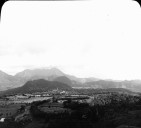 Martinique. Panorama du Morne-Rouge, vue prise du Nord, la croix au-dessus du Camp (partie Ouest) (au loin le massif des Carbets) (1899) / [photogr.] Salles ; [photogr. reprod. par Radiguet & Massiot?]
Martinique. Panorama du Morne-Rouge, vue prise du Nord, la croix au-dessus du Camp (partie Ouest) (au loin le massif des Carbets) (1899) / [photogr.] Salles ; [photogr. reprod. par Radiguet & Massiot?] Appartient à l’ensemble documentaire : PhoVerre1
-
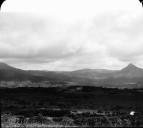 Martinique. Panorama du Morne-Rouge, vue prise du Nord, la croix au-dessus du Camp (partie Est) (piton aigu = piton gelé) (5 mars 1899) / [photogr.] Salles ; [photogr. reprod. par Radiguet & Massiot?]
Martinique. Panorama du Morne-Rouge, vue prise du Nord, la croix au-dessus du Camp (partie Est) (piton aigu = piton gelé) (5 mars 1899) / [photogr.] Salles ; [photogr. reprod. par Radiguet & Massiot?] Appartient à l’ensemble documentaire : PhoVerre1
-
 Martinique. Le François, vue prise de la route du Vauclin (1895) / [photogr.] Salles ; [photogr. reprod. par Radiguet & Massiot?]
Martinique. Le François, vue prise de la route du Vauclin (1895) / [photogr.] Salles ; [photogr. reprod. par Radiguet & Massiot?] Appartient à l’ensemble documentaire : PhoVerre1
-
 St Pierre. Arbre à caoutchouc, quartier du Fort (M. Landes) / [photogr.] A. S[alles]
St Pierre. Arbre à caoutchouc, quartier du Fort (M. Landes) / [photogr.] A. S[alles] Appartient à l’ensemble documentaire : PhoVerre1
-
 Martinique. Morne Diamant (sud de la Martinique) (1895) / [photogr.] Salles ; [photogr. reprod. par Radiguet & Massiot?]
Martinique. Morne Diamant (sud de la Martinique) (1895) / [photogr.] Salles ; [photogr. reprod. par Radiguet & Massiot?] Appartient à l’ensemble documentaire : PhoVerre1
-
 Martinique. La Pelée et Quartier du Fort, vus du Gouvernement, à S[ain]t Pierre (1899) / [photogr.] Salles ; [photogr. reprod. par Molténi?]
Martinique. La Pelée et Quartier du Fort, vus du Gouvernement, à S[ain]t Pierre (1899) / [photogr.] Salles ; [photogr. reprod. par Molténi?] Appartient à l’ensemble documentaire : PhoVerre1
-
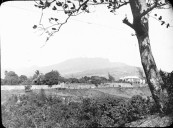 Martinique. La Pelée vue de la route au-dessus de la Savane de S[ain]t Pierre (1899) / [photogr.] Salles ; [photogr. reprod. par Molténi?]
Martinique. La Pelée vue de la route au-dessus de la Savane de S[ain]t Pierre (1899) / [photogr.] Salles ; [photogr. reprod. par Molténi?] Appartient à l’ensemble documentaire : PhoVerre1
-
 Martinique. La Pelée et Quartier du Fort, vus du Gouvernement, à S[ain]t Pierre (1899) / [photogr.] Salles ; [photogr. reprod. par Molténi?]
Martinique. La Pelée et Quartier du Fort, vus du Gouvernement, à S[ain]t Pierre (1899) / [photogr.] Salles ; [photogr. reprod. par Molténi?] Appartient à l’ensemble documentaire : PhoVerre1
-
 Martinique. Route de S[ain]t Pierre au Prêcheur (1899) / [photogr.] Salles ; [photogr. reprod. par Radiguet & Massiot?]
Martinique. Route de S[ain]t Pierre au Prêcheur (1899) / [photogr.] Salles ; [photogr. reprod. par Radiguet & Massiot?] Appartient à l’ensemble documentaire : PhoVerre1
-
 Martinique. Bambous au bord de la rivière Monsieur, à Moutte, près Fort-de-France (Déc. 1894) / [photogr.] Salles ; [photogr. reprod. par Radiguet & Massiot?]
Martinique. Bambous au bord de la rivière Monsieur, à Moutte, près Fort-de-France (Déc. 1894) / [photogr.] Salles ; [photogr. reprod. par Radiguet & Massiot?] Appartient à l’ensemble documentaire : PhoVerre1
-
 Martinique. Champs de cannes à sucre, près Fort-de-France, Moutte (Déc. 1894) / [photogr.] Salles ; [photogr. reprod. par Radiguet & Massiot?]
Martinique. Champs de cannes à sucre, près Fort-de-France, Moutte (Déc. 1894) / [photogr.] Salles ; [photogr. reprod. par Radiguet & Massiot?] Appartient à l’ensemble documentaire : PhoVerre1
-
 [18 phot. de la Martinique, de Sainte-Lucie et de la Trinité, don Demaffey en 1886]
[18 phot. de la Martinique, de Sainte-Lucie et de la Trinité, don Demaffey en 1886] Appartient à l’ensemble documentaire : PhoGéo1
-
 Martinique. Fort-de-France et sa rade. Panorama pris de l'Ouest jusqu'au Nord (3 clichés). Bisson [à d.] / [photogr.] A. S[alles]
Martinique. Fort-de-France et sa rade. Panorama pris de l'Ouest jusqu'au Nord (3 clichés). Bisson [à d.] / [photogr.] A. S[alles] Appartient à l’ensemble documentaire : PhoVerre1
-
 Martinique. Chemin du Calvaire, au Morne-Rouge (1899) / [photogr.] Salles ; [photogr. reprod. par Radiguet & Massiot?]
Martinique. Chemin du Calvaire, au Morne-Rouge (1899) / [photogr.] Salles ; [photogr. reprod. par Radiguet & Massiot?] Appartient à l’ensemble documentaire : PhoVerre1
-
 Martinique. "Vidé la ka vini" dans la rue Victor Hugo, Fort-de-France (Déc. 1894) / [photogr.] Salles ; [photogr. reprod. par Molténi?]
Martinique. "Vidé la ka vini" dans la rue Victor Hugo, Fort-de-France (Déc. 1894) / [photogr.] Salles ; [photogr. reprod. par Molténi?] Appartient à l’ensemble documentaire : PhoVerre1
-
 Martinique. Village du Morne-Vert et versant Nord des pitons du Carbet (panorama : partie Nord) (1899) / [photogr.] Salles ; [photogr. reprod. par Radiguet & Massiot?]
Martinique. Village du Morne-Vert et versant Nord des pitons du Carbet (panorama : partie Nord) (1899) / [photogr.] Salles ; [photogr. reprod. par Radiguet & Massiot?] Appartient à l’ensemble documentaire : PhoVerre1
-
 Martinique. Etablissement de la fontaine Didier, près Fort-de-France (1899) / [photogr.] Salles ; [photogr. reprod. par Molténi?]
Martinique. Etablissement de la fontaine Didier, près Fort-de-France (1899) / [photogr.] Salles ; [photogr. reprod. par Molténi?] Appartient à l’ensemble documentaire : PhoVerre1
-
 Martinique. Dans la rue à Fort-de-France (Déc. 1894) / [photogr.] Salles ; [photogr. reprod. par Molténi?]
Martinique. Dans la rue à Fort-de-France (Déc. 1894) / [photogr.] Salles ; [photogr. reprod. par Molténi?] Appartient à l’ensemble documentaire : PhoVerre1
-
 Martinique. Un groupe de femmes à Fort-de-France (1895) / [photogr.] Salles ; [photogr. reprod. par Molténi?]
Martinique. Un groupe de femmes à Fort-de-France (1895) / [photogr.] Salles ; [photogr. reprod. par Molténi?] Appartient à l’ensemble documentaire : PhoVerre1
-
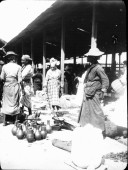 Martinique. Au marché, Fort-de-France (1899) / [photogr.] Salles ; [photogr. reprod. par Molténi?]
Martinique. Au marché, Fort-de-France (1899) / [photogr.] Salles ; [photogr. reprod. par Molténi?] Appartient à l’ensemble documentaire : PhoVerre1
-
 Martinique. Au marché de Fort-de-France (1899) / [photogr.] Salles ; [photogr. reprod. par Molténi?]
Martinique. Au marché de Fort-de-France (1899) / [photogr.] Salles ; [photogr. reprod. par Molténi?] Appartient à l’ensemble documentaire : PhoVerre1
-
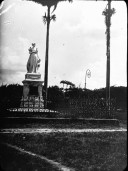 Martinique. Statue de Joséphine, sur la Savane (1899) / [photogr.] Salles ; [photogr. reprod. par Molténi?]
Martinique. Statue de Joséphine, sur la Savane (1899) / [photogr.] Salles ; [photogr. reprod. par Molténi?] Appartient à l’ensemble documentaire : PhoVerre1
-
 Martinique. Dans la rue à Fort-de-France (Déc. 1894) / [photogr.] Salles ; [photogr. reprod. par Molténi?]
Martinique. Dans la rue à Fort-de-France (Déc. 1894) / [photogr.] Salles ; [photogr. reprod. par Molténi?] Appartient à l’ensemble documentaire : PhoVerre1
-
 Martinique. Torrent descendant des Carbets, près de l'Alma (route de la Trace) (1899) / [photogr.] Salles ; [photogr. reprod. par Radiguet & Massiot?]
Martinique. Torrent descendant des Carbets, près de l'Alma (route de la Trace) (1899) / [photogr.] Salles ; [photogr. reprod. par Radiguet & Massiot?] Appartient à l’ensemble documentaire : PhoVerre1
-
 Martinique. Sur la route, près Fort-de-France (Déc. 1894) / [photogr.] Salles ; [photogr. reprod. par Molténi?]
Martinique. Sur la route, près Fort-de-France (Déc. 1894) / [photogr.] Salles ; [photogr. reprod. par Molténi?] Appartient à l’ensemble documentaire : PhoVerre1
-
 Martinique. Sur la route de la fontaine Didier, près Fort-de-France (Déc. 1894) / [photogr.] Salles ; [photogr. reprod. par Molténi?]
Martinique. Sur la route de la fontaine Didier, près Fort-de-France (Déc. 1894) / [photogr.] Salles ; [photogr. reprod. par Molténi?] Appartient à l’ensemble documentaire : PhoVerre1
-
 Martinique. Fougère arborescente, au calvaire du Morne-Rouge (1899) / [photogr.] Salles ; [photogr. reprod. par Radiguet & Massiot?]
Martinique. Fougère arborescente, au calvaire du Morne-Rouge (1899) / [photogr.] Salles ; [photogr. reprod. par Radiguet & Massiot?] Appartient à l’ensemble documentaire : PhoVerre1
-
 Martinique. Les pitons du Carbet, vue prise du camp Balata (Déc. 1898) / [photogr.] Salles ; [photogr. reprod. par Radiguet & Massiot?]
Martinique. Les pitons du Carbet, vue prise du camp Balata (Déc. 1898) / [photogr.] Salles ; [photogr. reprod. par Radiguet & Massiot?] Appartient à l’ensemble documentaire : PhoVerre1
-
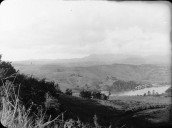 Martinique. Havre de la Trinité, vu de l'Est (partie Sud) (Janv. 1895) / [photogr.] Salles ; [photogr. reprod. par Radiguet & Massiot?]
Martinique. Havre de la Trinité, vu de l'Est (partie Sud) (Janv. 1895) / [photogr.] Salles ; [photogr. reprod. par Radiguet & Massiot?] Appartient à l’ensemble documentaire : PhoVerre1
-
 Martinique. Le François, vue prise de la route du S[ain]t Esprit (1895) / [photogr.] Salles ; [photogr. reprod. par Radiguet & Massiot?]
Martinique. Le François, vue prise de la route du S[ain]t Esprit (1895) / [photogr.] Salles ; [photogr. reprod. par Radiguet & Massiot?] Appartient à l’ensemble documentaire : PhoVerre1
-
 Martinique. Sur la route du François au Vauclin, vue vers le Sud (Déc. 1895) / [photogr.] Salles ; [photogr. reprod. par Radiguet & Massiot?]
Martinique. Sur la route du François au Vauclin, vue vers le Sud (Déc. 1895) / [photogr.] Salles ; [photogr. reprod. par Radiguet & Massiot?] Appartient à l’ensemble documentaire : PhoVerre1
-
 Martinique. Une rue Est-Ouest à Fort-de-France (Déc. 1894) / [photogr.] Salles ; [photogr. reprod. par Molténi?]
Martinique. Une rue Est-Ouest à Fort-de-France (Déc. 1894) / [photogr.] Salles ; [photogr. reprod. par Molténi?] Appartient à l’ensemble documentaire : PhoVerre1
-
 Martinique. L'église provisoire sur la Savane (Déc. 1894) / [photogr.] Salles ; [photogr. reprod. par Molténi?]
Martinique. L'église provisoire sur la Savane (Déc. 1894) / [photogr.] Salles ; [photogr. reprod. par Molténi?] Appartient à l’ensemble documentaire : PhoVerre1
-
 Martinique. Le long de la Savane, Fort-de-France (Déc. 1894) / [photogr.] Salles ; [photogr. reprod. par Molténi?]
Martinique. Le long de la Savane, Fort-de-France (Déc. 1894) / [photogr.] Salles ; [photogr. reprod. par Molténi?] Appartient à l’ensemble documentaire : PhoVerre1
-
 Martinique. Une vieille femme, Fort-de-France (Déc. 1894) / [photogr.] Salles ; [photogr. reprod. par Molténi?]
Martinique. Une vieille femme, Fort-de-France (Déc. 1894) / [photogr.] Salles ; [photogr. reprod. par Molténi?] Appartient à l’ensemble documentaire : PhoVerre1
-
 Martinique. Au marché, Fort-de-France (1899) / [photogr.] Salles ; [photogr. reprod. par Molténi?]
Martinique. Au marché, Fort-de-France (1899) / [photogr.] Salles ; [photogr. reprod. par Molténi?] Appartient à l’ensemble documentaire : PhoVerre1
-
 Martinique. Fougères arborescentes au Morne-Rouge, fouetté par l'alizé (piton aigu = piton gelé) (1899) / [photogr.] Salles ; [photogr. reprod. par Radiguet & Massiot?]
Martinique. Fougères arborescentes au Morne-Rouge, fouetté par l'alizé (piton aigu = piton gelé) (1899) / [photogr.] Salles ; [photogr. reprod. par Radiguet & Massiot?] Appartient à l’ensemble documentaire : PhoVerre1
-
 Martinique. Au bord de la route vers Moutte et la Trinité, près Fort-de-France (Déc. 1894) / [photogr.] Salles ; [photogr. reprod. par Molténi?]
Martinique. Au bord de la route vers Moutte et la Trinité, près Fort-de-France (Déc. 1894) / [photogr.] Salles ; [photogr. reprod. par Molténi?] Appartient à l’ensemble documentaire : PhoVerre1
-
 Martinique. Sur la route, près Fort-de-France (1899) / [photogr.] Salles ; [photogr. reprod. par Molténi?]
Martinique. Sur la route, près Fort-de-France (1899) / [photogr.] Salles ; [photogr. reprod. par Molténi?] Appartient à l’ensemble documentaire : PhoVerre1
-
 Martinique. Fort-de-France, vue de la rade (Janv. 1895) / [photogr.] Salles ; [photogr. reprod. par Molténi?]
Martinique. Fort-de-France, vue de la rade (Janv. 1895) / [photogr.] Salles ; [photogr. reprod. par Molténi?] Appartient à l’ensemble documentaire : PhoVerre1
-
 Martinique. L'usine du Vauclin (Déc. 1895) / [photogr.] Salles ; [photogr. reprod. par Radiguet & Massiot?]
Martinique. L'usine du Vauclin (Déc. 1895) / [photogr.] Salles ; [photogr. reprod. par Radiguet & Massiot?] Appartient à l’ensemble documentaire : PhoVerre1
-
 Martinique. Sortie de messe à la Trinité (Déc. 1894) / [photogr.] Salles ; [photogr. reprod. par Radiguet & Massiot?]
Martinique. Sortie de messe à la Trinité (Déc. 1894) / [photogr.] Salles ; [photogr. reprod. par Radiguet & Massiot?] Appartient à l’ensemble documentaire : PhoVerre1
-
 Martinique. Panorama de la baie de la Trinité et de la presqu'île de la Caravelle, vue prise de l'Ouest (partie Sud) (1899) / [photogr.] Salles ; [photogr. reprod. par Radiguet & Massiot?]
Martinique. Panorama de la baie de la Trinité et de la presqu'île de la Caravelle, vue prise de l'Ouest (partie Sud) (1899) / [photogr.] Salles ; [photogr. reprod. par Radiguet & Massiot?] Appartient à l’ensemble documentaire : PhoVerre1
-
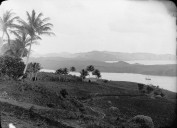 Martinique. Panorama de la baie de la Trinité et de la presqu'île de la Caravelle, vue prise de l'Ouest (partie Nord) (1899) / [photogr.] Salles ; [photogr. reprod. par Radiguet & Massiot?]
Martinique. Panorama de la baie de la Trinité et de la presqu'île de la Caravelle, vue prise de l'Ouest (partie Nord) (1899) / [photogr.] Salles ; [photogr. reprod. par Radiguet & Massiot?] Appartient à l’ensemble documentaire : PhoVerre1
-
 Fort de France (Martinique). Fontaine Gueydon (1882) / [photogr.?] ; [photogr. reprod. par Molténi?]
Fort de France (Martinique). Fontaine Gueydon (1882) / [photogr.?] ; [photogr. reprod. par Molténi?] Appartient à l’ensemble documentaire : PhoVerre1
-
 Martinique. Sortie de messe à Fort-de-France (1899) / [photogr.] Salles ; [photogr. reprod. par Molténi?]
Martinique. Sortie de messe à Fort-de-France (1899) / [photogr.] Salles ; [photogr. reprod. par Molténi?] Appartient à l’ensemble documentaire : PhoVerre1
-
 Martinique. Marchande de pistaches "bien grillées" au Morne-Rouge (1899) / [photogr.] Salles ; [photogr. reprod. par Radiguet & Massiot?]
Martinique. Marchande de pistaches "bien grillées" au Morne-Rouge (1899) / [photogr.] Salles ; [photogr. reprod. par Radiguet & Massiot?] Appartient à l’ensemble documentaire : PhoVerre1
-
 Martinique. Bibliothèque Schoelcher à Fort-de-France (Déc. 1894) / [photogr.] Salles ; [photogr. reprod. par Molténi?]
Martinique. Bibliothèque Schoelcher à Fort-de-France (Déc. 1894) / [photogr.] Salles ; [photogr. reprod. par Molténi?] Appartient à l’ensemble documentaire : PhoVerre1
-
 Martinique. Sur la Savane de Fort-de-France (Déc. 1894) / [photogr.] Salles ; [photogr. reprod. par Molténi?]
Martinique. Sur la Savane de Fort-de-France (Déc. 1894) / [photogr.] Salles ; [photogr. reprod. par Molténi?] Appartient à l’ensemble documentaire : PhoVerre1
-
 Martinique. Habitation de paysan, près Fort-de-France (Déc. 1894) / [photogr.] Salles ; [photogr. reprod. par Molténi?]
Martinique. Habitation de paysan, près Fort-de-France (Déc. 1894) / [photogr.] Salles ; [photogr. reprod. par Molténi?] Appartient à l’ensemble documentaire : PhoVerre1
-
 Martinique. Havre de la Trinité, vu de l'Est (partie Nord) (Janv. 1895) / [photogr.] Salles ; [photogr. reprod. par Radiguet & Massiot?]
Martinique. Havre de la Trinité, vu de l'Est (partie Nord) (Janv. 1895) / [photogr.] Salles ; [photogr. reprod. par Radiguet & Massiot?] Appartient à l’ensemble documentaire : PhoVerre1
-
 Martinique. Vue du Nord sur la rade de Fort-de-France (Déc. 1894) / [photogr.] Salles ; [photogr. reprod. par Molténi?]
Martinique. Vue du Nord sur la rade de Fort-de-France (Déc. 1894) / [photogr.] Salles ; [photogr. reprod. par Molténi?] Appartient à l’ensemble documentaire : PhoVerre1
-
 Martinique. Les pitons du Carbet, vue au large à l'Ouest (Janv. 1895) / [photogr.] Salles ; [photogr. reprod. par Radiguet & Massiot?]
Martinique. Les pitons du Carbet, vue au large à l'Ouest (Janv. 1895) / [photogr.] Salles ; [photogr. reprod. par Radiguet & Massiot?] Appartient à l’ensemble documentaire : PhoVerre1
-
 Martinique (1882). Fort de France. Riv[ière] Madame / [photogr.?] ; [photogr. reprod. par Molténi?]
Martinique (1882). Fort de France. Riv[ière] Madame / [photogr.?] ; [photogr. reprod. par Molténi?] Appartient à l’ensemble documentaire : PhoVerre1
-
 Martinique. Capresse (Fort-de-France) (1899) / [photogr.] Salles ; [photogr. reprod. par Radiguet & Massiot?]
Martinique. Capresse (Fort-de-France) (1899) / [photogr.] Salles ; [photogr. reprod. par Radiguet & Massiot?] Appartient à l’ensemble documentaire : PhoVerre1
-
 Martinique. Village du Morne-Rouge (1899) / [photogr.] Salles ; [photogr. reprod. par Radiguet & Massiot?]
Martinique. Village du Morne-Rouge (1899) / [photogr.] Salles ; [photogr. reprod. par Radiguet & Massiot?] Appartient à l’ensemble documentaire : PhoVerre1
-
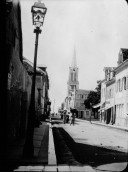 Martinique. Rue de l'Eglise, Fort-de-France (1899) / [photogr.] Salles ; [photogr. reprod. par Molténi?]
Martinique. Rue de l'Eglise, Fort-de-France (1899) / [photogr.] Salles ; [photogr. reprod. par Molténi?] Appartient à l’ensemble documentaire : PhoVerre1
-
 Martinique. Sur la route (près Fort-de-France) (1899) / [photogr.] Salles ; [photogr. reprod. par Molténi?]
Martinique. Sur la route (près Fort-de-France) (1899) / [photogr.] Salles ; [photogr. reprod. par Molténi?] Appartient à l’ensemble documentaire : PhoVerre1
-
 Martinique. Village du Morne-Vert et versant Nord des pitons du Carbet (panorama : partie Sud) (1899) / [photogr.] Salles ; [photogr. reprod. par Radiguet & Massiot?]
Martinique. Village du Morne-Vert et versant Nord des pitons du Carbet (panorama : partie Sud) (1899) / [photogr.] Salles ; [photogr. reprod. par Radiguet & Massiot?] Appartient à l’ensemble documentaire : PhoVerre1
-
 Martinique. Le Gouvernement à Fort-de-France (Déc. 1894) / [photogr.] Salles ; [photogr. reprod. par Molténi?]
Martinique. Le Gouvernement à Fort-de-France (Déc. 1894) / [photogr.] Salles ; [photogr. reprod. par Molténi?] Appartient à l’ensemble documentaire : PhoVerre1
-
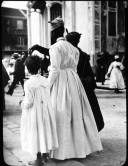 Martinique. Jeunnes, Fort-de-France (1899) / [photogr.] Salles ; [photogr. reprod. par Molténi?]
Martinique. Jeunnes, Fort-de-France (1899) / [photogr.] Salles ; [photogr. reprod. par Molténi?] Appartient à l’ensemble documentaire : PhoVerre1
-
 Golfe de la Trinité, vu de l'Ouest II (Déc.1894) / [photogr.] A. S[alles]
Golfe de la Trinité, vu de l'Ouest II (Déc.1894) / [photogr.] A. S[alles] Appartient à l’ensemble documentaire : PhoVerre1
-
 Martinique. Golfe de la Trinité, vu de la Caravelle I (Déc. 1894) / [photogr.] A. S[alles]
Martinique. Golfe de la Trinité, vu de la Caravelle I (Déc. 1894) / [photogr.] A. S[alles] Appartient à l’ensemble documentaire : PhoVerre1
-
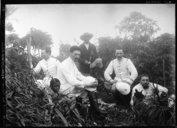 Au sommet du morne Noyau (pitons du Carbet), 22 Janv. 1899 / [photogr.] A. S[alles]
Au sommet du morne Noyau (pitons du Carbet), 22 Janv. 1899 / [photogr.] A. S[alles] Appartient à l’ensemble documentaire : PhoVerre1
-
 Haute vallée de la Capot (Champflore), Piton Gelé (1899) / [photogr.] A. S[alles]
Haute vallée de la Capot (Champflore), Piton Gelé (1899) / [photogr.] A. S[alles] Appartient à l’ensemble documentaire : PhoVerre1
-
 Martinique. Embouchure de la rivière de Basse-Pointe, de la fenêtre, chez Rosemina Venus (mars 1899) / [photogr.] Salles ; [photogr. reprod. par Radiguet & Massiot?]
Martinique. Embouchure de la rivière de Basse-Pointe, de la fenêtre, chez Rosemina Venus (mars 1899) / [photogr.] Salles ; [photogr. reprod. par Radiguet & Massiot?] Appartient à l’ensemble documentaire : PhoVerre1
-
 Martinique. La Roxelane et les blanchisseuses. S[ain]t Pierre (1899) / [photogr.] Salles ; [photogr. reprod. par Molténi?]
Martinique. La Roxelane et les blanchisseuses. S[ain]t Pierre (1899) / [photogr.] Salles ; [photogr. reprod. par Molténi?] Appartient à l’ensemble documentaire : PhoVerre1
-
 Martinique. Panorama de la rade de S[ain]t Pierre, pris du Sud, partie Est (1899) / [photogr.] Salles ; [photogr. reprod. par Molténi?]
Martinique. Panorama de la rade de S[ain]t Pierre, pris du Sud, partie Est (1899) / [photogr.] Salles ; [photogr. reprod. par Molténi?] Appartient à l’ensemble documentaire : PhoVerre1
-
 Martinique. Cascade au Jardin botanique de S[ain]t Pierre (1899) / [photogr.] Salles ; [photogr. reprod. par Molténi?]
Martinique. Cascade au Jardin botanique de S[ain]t Pierre (1899) / [photogr.] Salles ; [photogr. reprod. par Molténi?] Appartient à l’ensemble documentaire : PhoVerre1
-
 Martinique. Les grands cycas du Jardin botanique de S[ain]t Pierre (1899) / [photogr.] Salles ; [photogr. reprod. par Molténi?]
Martinique. Les grands cycas du Jardin botanique de S[ain]t Pierre (1899) / [photogr.] Salles ; [photogr. reprod. par Molténi?] Appartient à l’ensemble documentaire : PhoVerre1
-
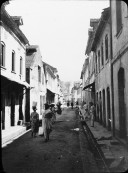 Martinique. La Grand-rue, dans le quartier du Mouillage à S[ain]t Pierre, du Sud vers le Nord. Au fond les tours de la cathédrale (1899) / [photogr.] Salles ; [photogr. reprod. par Molténi?]
Martinique. La Grand-rue, dans le quartier du Mouillage à S[ain]t Pierre, du Sud vers le Nord. Au fond les tours de la cathédrale (1899) / [photogr.] Salles ; [photogr. reprod. par Molténi?] Appartient à l’ensemble documentaire : PhoVerre1
-
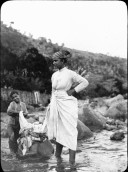 Martinique. Blanchisseuse. S[ain]t Pierre (1899) / [photogr.] Salles ; [photogr. reprod. par Radiguet & Massiot?]
Martinique. Blanchisseuse. S[ain]t Pierre (1899) / [photogr.] Salles ; [photogr. reprod. par Radiguet & Massiot?] Appartient à l’ensemble documentaire : PhoVerre1
-
 Martinique. Ravin de la Fontaine-Chaude, pente Ouest de la Pelée (1899) / [photogr.] Salles ; [photogr. reprod. par Radiguet & Massiot?]
Martinique. Ravin de la Fontaine-Chaude, pente Ouest de la Pelée (1899) / [photogr.] Salles ; [photogr. reprod. par Radiguet & Massiot?] Appartient à l’ensemble documentaire : PhoVerre1
-
 Martinique. Oratoire sur la route du Prêcheur (1899) / [photogr.] Salles ; [photogr. reprod. par Radiguet & Massiot?]
Martinique. Oratoire sur la route du Prêcheur (1899) / [photogr.] Salles ; [photogr. reprod. par Radiguet & Massiot?] Appartient à l’ensemble documentaire : PhoVerre1
-
 Martinique. Blanchisseuses. S[ain]t Pierre (1899) / [photogr.] Salles ; [photogr. reprod. par Radiguet & Massiot?]
Martinique. Blanchisseuses. S[ain]t Pierre (1899) / [photogr.] Salles ; [photogr. reprod. par Radiguet & Massiot?] Appartient à l’ensemble documentaire : PhoVerre1
-
 Martinique. S[ain]t Pierre (1882) / [photogr.?] ; [photogr. reprod. par Molténi?]
Martinique. S[ain]t Pierre (1882) / [photogr.?] ; [photogr. reprod. par Molténi?] Appartient à l’ensemble documentaire : PhoVerre1
-
 Martinique. Village de la Grande Anse, vue prise en venant de la Trinité (1899) / [photogr.] Salles ; [photogr. reprod. par Radiguet & Massiot?]
Martinique. Village de la Grande Anse, vue prise en venant de la Trinité (1899) / [photogr.] Salles ; [photogr. reprod. par Radiguet & Massiot?] Appartient à l’ensemble documentaire : PhoVerre1
-
 Martinique. La rivière Roxelane (vue prise vers l'Est, au pied de la Savane). S[ain]t Pierre (1899) / [photogr.] Salles ; [photogr. reprod. par Molténi?]
Martinique. La rivière Roxelane (vue prise vers l'Est, au pied de la Savane). S[ain]t Pierre (1899) / [photogr.] Salles ; [photogr. reprod. par Molténi?] Appartient à l’ensemble documentaire : PhoVerre1
-
 Martinique. Habitation Henri Le Roux Préville (cacaoyère), versant Ouest de la Pelée, au-dessus de la Fontaine-Chaude (29 Janvier 1899) / [photogr.] Salles ; [photogr. reprod. par Radiguet & Massiot?]
Martinique. Habitation Henri Le Roux Préville (cacaoyère), versant Ouest de la Pelée, au-dessus de la Fontaine-Chaude (29 Janvier 1899) / [photogr.] Salles ; [photogr. reprod. par Radiguet & Massiot?] Appartient à l’ensemble documentaire : PhoVerre1
-
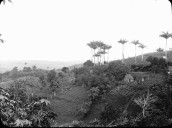 Martinique. Route du village du Gros-Morne, vers l'Est (Janv. 1895) / [photogr.] Salles ; [photogr. reprod. par Radiguet & Massiot?]
Martinique. Route du village du Gros-Morne, vers l'Est (Janv. 1895) / [photogr.] Salles ; [photogr. reprod. par Radiguet & Massiot?] Appartient à l’ensemble documentaire : PhoVerre1
-
 Martinique. Une ruelle dans le quartier du Centre à S[ain]t Pierre (de la Gr[an]d Rue à la mer) (1899) / [photogr.] Salles ; [photogr. reprod. par Molténi?]
Martinique. Une ruelle dans le quartier du Centre à S[ain]t Pierre (de la Gr[an]d Rue à la mer) (1899) / [photogr.] Salles ; [photogr. reprod. par Molténi?] Appartient à l’ensemble documentaire : PhoVerre1
-
 Martinique. Rade de S[ain]t Pierre : vue prise du Sud, de la route du Carbet, partie Ouest du panorama (1899) / [photogr.] Salles ; [photogr. reprod. par Molténi?]
Martinique. Rade de S[ain]t Pierre : vue prise du Sud, de la route du Carbet, partie Ouest du panorama (1899) / [photogr.] Salles ; [photogr. reprod. par Molténi?] Appartient à l’ensemble documentaire : PhoVerre1
-
 Martinique. Bourg du Marigot, vue prise du Nord (1899) / [photogr.] Salles ; [photogr. reprod. par Radiguet & Massiot?]
Martinique. Bourg du Marigot, vue prise du Nord (1899) / [photogr.] Salles ; [photogr. reprod. par Radiguet & Massiot?] Appartient à l’ensemble documentaire : PhoVerre1
-
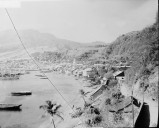 Martinique. Rade de S[ain]t Pierre : vue prise du Sud, de la route du Carbet, partie Est du panorama (1899) / [photogr.] Salles ; [photogr. reprod. par Molténi?]
Martinique. Rade de S[ain]t Pierre : vue prise du Sud, de la route du Carbet, partie Est du panorama (1899) / [photogr.] Salles ; [photogr. reprod. par Molténi?] Appartient à l’ensemble documentaire : PhoVerre1
-
 Martinique. S[ain]t Pierre. Riv[ière] Roxelande (1882) / [photogr.?] ; [photogr. reprod. par Molténi?]
Martinique. S[ain]t Pierre. Riv[ière] Roxelande (1882) / [photogr.?] ; [photogr. reprod. par Molténi?] Appartient à l’ensemble documentaire : PhoVerre1
-
 Martinique. Case du gardien de la piscine à Fontaine-Chaude (1899) / [photogr.] Salles ; [photogr. reprod. par Radiguet & Massiot?]
Martinique. Case du gardien de la piscine à Fontaine-Chaude (1899) / [photogr.] Salles ; [photogr. reprod. par Radiguet & Massiot?] Appartient à l’ensemble documentaire : PhoVerre1
-
 Martinique. Ruelle croisant la Gr[an]d Rue à S[ain]t Pierre, quartier du Centre (1899) / [photogr.] Salles ; [photogr. reprod. par Molténi?]
Martinique. Ruelle croisant la Gr[an]d Rue à S[ain]t Pierre, quartier du Centre (1899) / [photogr.] Salles ; [photogr. reprod. par Molténi?] Appartient à l’ensemble documentaire : PhoVerre1
-
 Martinique. Sur la route du Prêcheur (1899) / [photogr.] Salles ; [photogr. reprod. par Radiguet & Massiot?]
Martinique. Sur la route du Prêcheur (1899) / [photogr.] Salles ; [photogr. reprod. par Radiguet & Massiot?] Appartient à l’ensemble documentaire : PhoVerre1
-
 Martinique. La Roxelane au pied de la Savane. Vue prise de l'Est à l'Ouest. S[ain]t Pierre (1899) / [photogr.] Salles ; [photogr. reprod. par Molténi?]
Martinique. La Roxelane au pied de la Savane. Vue prise de l'Est à l'Ouest. S[ain]t Pierre (1899) / [photogr.] Salles ; [photogr. reprod. par Molténi?] Appartient à l’ensemble documentaire : PhoVerre1
-
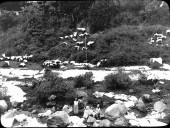 Martinique. Blanchisseuses. S[ain]t Pierre (1899) / [photogr.] Salles ; [photogr. reprod. par Radiguet & Massiot?]
Martinique. Blanchisseuses. S[ain]t Pierre (1899) / [photogr.] Salles ; [photogr. reprod. par Radiguet & Massiot?] Appartient à l’ensemble documentaire : PhoVerre1
-
 Martinique. Blanchisseuses. S[ain]t Pierre (1899) / [photogr.] Salles ; [photogr. reprod. par Radiguet & Massiot?]
Martinique. Blanchisseuses. S[ain]t Pierre (1899) / [photogr.] Salles ; [photogr. reprod. par Radiguet & Massiot?] Appartient à l’ensemble documentaire : PhoVerre1
-
 Martinique. En descendant de la Pelée vers Basse-Pointe, sous la pluie : partie Nord du panorama (19 mars 1899) / [photogr.] Salles ; [photogr. reprod. par Radiguet & Massiot?]
Martinique. En descendant de la Pelée vers Basse-Pointe, sous la pluie : partie Nord du panorama (19 mars 1899) / [photogr.] Salles ; [photogr. reprod. par Radiguet & Massiot?] Appartient à l’ensemble documentaire : PhoVerre1
-
 Martinique. Près du sommet de la montagne Pelée, en montant de la Basse-Pointe (19 mars 1899) / [photogr.] Salles ; [photogr. reprod. par Radiguet & Massiot?]
Martinique. Près du sommet de la montagne Pelée, en montant de la Basse-Pointe (19 mars 1899) / [photogr.] Salles ; [photogr. reprod. par Radiguet & Massiot?] Appartient à l’ensemble documentaire : PhoVerre1
-
 Martinique. Panorama de la rade de S[ain]t Pierre, pris du Sud, partie Ouest (1899) / [photogr.] Salles ; [photogr. reprod. par Molténi?]
Martinique. Panorama de la rade de S[ain]t Pierre, pris du Sud, partie Ouest (1899) / [photogr.] Salles ; [photogr. reprod. par Molténi?] Appartient à l’ensemble documentaire : PhoVerre1
Martinique. Trois filles de Béhanzin : Abopano, Potassi, Mécougon (Déc. 1894) / [photogr.] Salles ; [photogr. reprod. par Radiguet & Massiot?]
Appartient à l’ensemble documentaire : PhoVerre1Martinique. Béhanzin, ses 3 femmes (Vilo-Toté, Etiam, Mounoussouai) et ses 3 filles (Abopano, Potossai, Mécougon) au fort Tartenson (Déc. 1894) / [photogr.] Salles ; [photogr. reprod. par Radiguet & Massiot?]
Appartient à l’ensemble documentaire : PhoVerre1Martinique. Béhanzin et l'une de ses femmes, au fort Tartenson (Décembre 1894) / [photogr.] Salles ; [photogr. reprod. par Radiguet & Massiot?]
Appartient à l’ensemble documentaire : PhoVerre1Martinique. Béhanzin au fort Tartenson (Déc. 1894) / [photogr.] Salles ; [photogr. reprod. par Radiguet & Massiot?]
Appartient à l’ensemble documentaire : PhoVerre1Martinique. Addanedian, cabécère de Béhanzin à la Martinique (Déc. 1894) / [photogr.] Salles ; [photogr. reprod. par Radiguet & Massiot?]
Appartient à l’ensemble documentaire : PhoVerre1Martinique. Fort-de-France et sa rade, panorama pris de l'Ouest jusqu'au Nord, [à d.] Pointe Salomon (3 clichés) / [photogr.] A. S[alles]
Appartient à l’ensemble documentaire : PhoVerre1Martinique. Panorama du Morne-Rouge, vue prise du Nord, la croix au-dessus du Camp (partie Ouest) (au loin le massif des Carbets) (1899) / [photogr.] Salles ; [photogr. reprod. par Radiguet & Massiot?]
Appartient à l’ensemble documentaire : PhoVerre1Martinique. Panorama du Morne-Rouge, vue prise du Nord, la croix au-dessus du Camp (partie Est) (piton aigu = piton gelé) (5 mars 1899) / [photogr.] Salles ; [photogr. reprod. par Radiguet & Massiot?]
Appartient à l’ensemble documentaire : PhoVerre1Martinique. Le François, vue prise de la route du Vauclin (1895) / [photogr.] Salles ; [photogr. reprod. par Radiguet & Massiot?]
Appartient à l’ensemble documentaire : PhoVerre1St Pierre. Arbre à caoutchouc, quartier du Fort (M. Landes) / [photogr.] A. S[alles]
Appartient à l’ensemble documentaire : PhoVerre1Martinique. Morne Diamant (sud de la Martinique) (1895) / [photogr.] Salles ; [photogr. reprod. par Radiguet & Massiot?]
Appartient à l’ensemble documentaire : PhoVerre1Martinique. La Pelée et Quartier du Fort, vus du Gouvernement, à S[ain]t Pierre (1899) / [photogr.] Salles ; [photogr. reprod. par Molténi?]
Appartient à l’ensemble documentaire : PhoVerre1Martinique. La Pelée vue de la route au-dessus de la Savane de S[ain]t Pierre (1899) / [photogr.] Salles ; [photogr. reprod. par Molténi?]
Appartient à l’ensemble documentaire : PhoVerre1Martinique. La Pelée et Quartier du Fort, vus du Gouvernement, à S[ain]t Pierre (1899) / [photogr.] Salles ; [photogr. reprod. par Molténi?]
Appartient à l’ensemble documentaire : PhoVerre1Martinique. Route de S[ain]t Pierre au Prêcheur (1899) / [photogr.] Salles ; [photogr. reprod. par Radiguet & Massiot?]
Appartient à l’ensemble documentaire : PhoVerre1Martinique. Bambous au bord de la rivière Monsieur, à Moutte, près Fort-de-France (Déc. 1894) / [photogr.] Salles ; [photogr. reprod. par Radiguet & Massiot?]
Appartient à l’ensemble documentaire : PhoVerre1Martinique. Champs de cannes à sucre, près Fort-de-France, Moutte (Déc. 1894) / [photogr.] Salles ; [photogr. reprod. par Radiguet & Massiot?]
Appartient à l’ensemble documentaire : PhoVerre1[18 phot. de la Martinique, de Sainte-Lucie et de la Trinité, don Demaffey en 1886]
Appartient à l’ensemble documentaire : PhoGéo1Martinique. Fort-de-France et sa rade. Panorama pris de l'Ouest jusqu'au Nord (3 clichés). Bisson [à d.] / [photogr.] A. S[alles]
Appartient à l’ensemble documentaire : PhoVerre1Martinique. Chemin du Calvaire, au Morne-Rouge (1899) / [photogr.] Salles ; [photogr. reprod. par Radiguet & Massiot?]
Appartient à l’ensemble documentaire : PhoVerre1Martinique. "Vidé la ka vini" dans la rue Victor Hugo, Fort-de-France (Déc. 1894) / [photogr.] Salles ; [photogr. reprod. par Molténi?]
Appartient à l’ensemble documentaire : PhoVerre1Martinique. Village du Morne-Vert et versant Nord des pitons du Carbet (panorama : partie Nord) (1899) / [photogr.] Salles ; [photogr. reprod. par Radiguet & Massiot?]
Appartient à l’ensemble documentaire : PhoVerre1Martinique. Etablissement de la fontaine Didier, près Fort-de-France (1899) / [photogr.] Salles ; [photogr. reprod. par Molténi?]
Appartient à l’ensemble documentaire : PhoVerre1Martinique. Dans la rue à Fort-de-France (Déc. 1894) / [photogr.] Salles ; [photogr. reprod. par Molténi?]
Appartient à l’ensemble documentaire : PhoVerre1Martinique. Un groupe de femmes à Fort-de-France (1895) / [photogr.] Salles ; [photogr. reprod. par Molténi?]
Appartient à l’ensemble documentaire : PhoVerre1Martinique. Au marché, Fort-de-France (1899) / [photogr.] Salles ; [photogr. reprod. par Molténi?]
Appartient à l’ensemble documentaire : PhoVerre1Martinique. Au marché de Fort-de-France (1899) / [photogr.] Salles ; [photogr. reprod. par Molténi?]
Appartient à l’ensemble documentaire : PhoVerre1Martinique. Statue de Joséphine, sur la Savane (1899) / [photogr.] Salles ; [photogr. reprod. par Molténi?]
Appartient à l’ensemble documentaire : PhoVerre1Martinique. Dans la rue à Fort-de-France (Déc. 1894) / [photogr.] Salles ; [photogr. reprod. par Molténi?]
Appartient à l’ensemble documentaire : PhoVerre1Martinique. Torrent descendant des Carbets, près de l'Alma (route de la Trace) (1899) / [photogr.] Salles ; [photogr. reprod. par Radiguet & Massiot?]
Appartient à l’ensemble documentaire : PhoVerre1Martinique. Sur la route, près Fort-de-France (Déc. 1894) / [photogr.] Salles ; [photogr. reprod. par Molténi?]
Appartient à l’ensemble documentaire : PhoVerre1Martinique. Sur la route de la fontaine Didier, près Fort-de-France (Déc. 1894) / [photogr.] Salles ; [photogr. reprod. par Molténi?]
Appartient à l’ensemble documentaire : PhoVerre1Martinique. Fougère arborescente, au calvaire du Morne-Rouge (1899) / [photogr.] Salles ; [photogr. reprod. par Radiguet & Massiot?]
Appartient à l’ensemble documentaire : PhoVerre1Martinique. Les pitons du Carbet, vue prise du camp Balata (Déc. 1898) / [photogr.] Salles ; [photogr. reprod. par Radiguet & Massiot?]
Appartient à l’ensemble documentaire : PhoVerre1Martinique. Havre de la Trinité, vu de l'Est (partie Sud) (Janv. 1895) / [photogr.] Salles ; [photogr. reprod. par Radiguet & Massiot?]
Appartient à l’ensemble documentaire : PhoVerre1Martinique. Le François, vue prise de la route du S[ain]t Esprit (1895) / [photogr.] Salles ; [photogr. reprod. par Radiguet & Massiot?]
Appartient à l’ensemble documentaire : PhoVerre1Martinique. Sur la route du François au Vauclin, vue vers le Sud (Déc. 1895) / [photogr.] Salles ; [photogr. reprod. par Radiguet & Massiot?]
Appartient à l’ensemble documentaire : PhoVerre1Martinique. Une rue Est-Ouest à Fort-de-France (Déc. 1894) / [photogr.] Salles ; [photogr. reprod. par Molténi?]
Appartient à l’ensemble documentaire : PhoVerre1Martinique. L'église provisoire sur la Savane (Déc. 1894) / [photogr.] Salles ; [photogr. reprod. par Molténi?]
Appartient à l’ensemble documentaire : PhoVerre1Martinique. Le long de la Savane, Fort-de-France (Déc. 1894) / [photogr.] Salles ; [photogr. reprod. par Molténi?]
Appartient à l’ensemble documentaire : PhoVerre1Martinique. Une vieille femme, Fort-de-France (Déc. 1894) / [photogr.] Salles ; [photogr. reprod. par Molténi?]
Appartient à l’ensemble documentaire : PhoVerre1Martinique. Au marché, Fort-de-France (1899) / [photogr.] Salles ; [photogr. reprod. par Molténi?]
Appartient à l’ensemble documentaire : PhoVerre1Martinique. Fougères arborescentes au Morne-Rouge, fouetté par l'alizé (piton aigu = piton gelé) (1899) / [photogr.] Salles ; [photogr. reprod. par Radiguet & Massiot?]
Appartient à l’ensemble documentaire : PhoVerre1Martinique. Au bord de la route vers Moutte et la Trinité, près Fort-de-France (Déc. 1894) / [photogr.] Salles ; [photogr. reprod. par Molténi?]
Appartient à l’ensemble documentaire : PhoVerre1Martinique. Sur la route, près Fort-de-France (1899) / [photogr.] Salles ; [photogr. reprod. par Molténi?]
Appartient à l’ensemble documentaire : PhoVerre1Martinique. Fort-de-France, vue de la rade (Janv. 1895) / [photogr.] Salles ; [photogr. reprod. par Molténi?]
Appartient à l’ensemble documentaire : PhoVerre1Martinique. L'usine du Vauclin (Déc. 1895) / [photogr.] Salles ; [photogr. reprod. par Radiguet & Massiot?]
Appartient à l’ensemble documentaire : PhoVerre1Martinique. Sortie de messe à la Trinité (Déc. 1894) / [photogr.] Salles ; [photogr. reprod. par Radiguet & Massiot?]
Appartient à l’ensemble documentaire : PhoVerre1Martinique. Panorama de la baie de la Trinité et de la presqu'île de la Caravelle, vue prise de l'Ouest (partie Sud) (1899) / [photogr.] Salles ; [photogr. reprod. par Radiguet & Massiot?]
Appartient à l’ensemble documentaire : PhoVerre1Martinique. Panorama de la baie de la Trinité et de la presqu'île de la Caravelle, vue prise de l'Ouest (partie Nord) (1899) / [photogr.] Salles ; [photogr. reprod. par Radiguet & Massiot?]
Appartient à l’ensemble documentaire : PhoVerre1Fort de France (Martinique). Fontaine Gueydon (1882) / [photogr.?] ; [photogr. reprod. par Molténi?]
Appartient à l’ensemble documentaire : PhoVerre1Martinique. Sortie de messe à Fort-de-France (1899) / [photogr.] Salles ; [photogr. reprod. par Molténi?]
Appartient à l’ensemble documentaire : PhoVerre1Martinique. Marchande de pistaches "bien grillées" au Morne-Rouge (1899) / [photogr.] Salles ; [photogr. reprod. par Radiguet & Massiot?]
Appartient à l’ensemble documentaire : PhoVerre1Martinique. Bibliothèque Schoelcher à Fort-de-France (Déc. 1894) / [photogr.] Salles ; [photogr. reprod. par Molténi?]
Appartient à l’ensemble documentaire : PhoVerre1Martinique. Sur la Savane de Fort-de-France (Déc. 1894) / [photogr.] Salles ; [photogr. reprod. par Molténi?]
Appartient à l’ensemble documentaire : PhoVerre1Martinique. Habitation de paysan, près Fort-de-France (Déc. 1894) / [photogr.] Salles ; [photogr. reprod. par Molténi?]
Appartient à l’ensemble documentaire : PhoVerre1Martinique. Havre de la Trinité, vu de l'Est (partie Nord) (Janv. 1895) / [photogr.] Salles ; [photogr. reprod. par Radiguet & Massiot?]
Appartient à l’ensemble documentaire : PhoVerre1Martinique. Vue du Nord sur la rade de Fort-de-France (Déc. 1894) / [photogr.] Salles ; [photogr. reprod. par Molténi?]
Appartient à l’ensemble documentaire : PhoVerre1Martinique. Les pitons du Carbet, vue au large à l'Ouest (Janv. 1895) / [photogr.] Salles ; [photogr. reprod. par Radiguet & Massiot?]
Appartient à l’ensemble documentaire : PhoVerre1Martinique (1882). Fort de France. Riv[ière] Madame / [photogr.?] ; [photogr. reprod. par Molténi?]
Appartient à l’ensemble documentaire : PhoVerre1Martinique. Capresse (Fort-de-France) (1899) / [photogr.] Salles ; [photogr. reprod. par Radiguet & Massiot?]
Appartient à l’ensemble documentaire : PhoVerre1Martinique. Village du Morne-Rouge (1899) / [photogr.] Salles ; [photogr. reprod. par Radiguet & Massiot?]
Appartient à l’ensemble documentaire : PhoVerre1Martinique. Rue de l'Eglise, Fort-de-France (1899) / [photogr.] Salles ; [photogr. reprod. par Molténi?]
Appartient à l’ensemble documentaire : PhoVerre1Martinique. Sur la route (près Fort-de-France) (1899) / [photogr.] Salles ; [photogr. reprod. par Molténi?]
Appartient à l’ensemble documentaire : PhoVerre1Martinique. Village du Morne-Vert et versant Nord des pitons du Carbet (panorama : partie Sud) (1899) / [photogr.] Salles ; [photogr. reprod. par Radiguet & Massiot?]
Appartient à l’ensemble documentaire : PhoVerre1Martinique. Le Gouvernement à Fort-de-France (Déc. 1894) / [photogr.] Salles ; [photogr. reprod. par Molténi?]
Appartient à l’ensemble documentaire : PhoVerre1Martinique. Jeunnes, Fort-de-France (1899) / [photogr.] Salles ; [photogr. reprod. par Molténi?]
Appartient à l’ensemble documentaire : PhoVerre1Golfe de la Trinité, vu de l'Ouest II (Déc.1894) / [photogr.] A. S[alles]
Appartient à l’ensemble documentaire : PhoVerre1Martinique. Golfe de la Trinité, vu de la Caravelle I (Déc. 1894) / [photogr.] A. S[alles]
Appartient à l’ensemble documentaire : PhoVerre1Au sommet du morne Noyau (pitons du Carbet), 22 Janv. 1899 / [photogr.] A. S[alles]
Appartient à l’ensemble documentaire : PhoVerre1Haute vallée de la Capot (Champflore), Piton Gelé (1899) / [photogr.] A. S[alles]
Appartient à l’ensemble documentaire : PhoVerre1Martinique. Embouchure de la rivière de Basse-Pointe, de la fenêtre, chez Rosemina Venus (mars 1899) / [photogr.] Salles ; [photogr. reprod. par Radiguet & Massiot?]
Appartient à l’ensemble documentaire : PhoVerre1Martinique. La Roxelane et les blanchisseuses. S[ain]t Pierre (1899) / [photogr.] Salles ; [photogr. reprod. par Molténi?]
Appartient à l’ensemble documentaire : PhoVerre1Martinique. Panorama de la rade de S[ain]t Pierre, pris du Sud, partie Est (1899) / [photogr.] Salles ; [photogr. reprod. par Molténi?]
Appartient à l’ensemble documentaire : PhoVerre1Martinique. Cascade au Jardin botanique de S[ain]t Pierre (1899) / [photogr.] Salles ; [photogr. reprod. par Molténi?]
Appartient à l’ensemble documentaire : PhoVerre1Martinique. Les grands cycas du Jardin botanique de S[ain]t Pierre (1899) / [photogr.] Salles ; [photogr. reprod. par Molténi?]
Appartient à l’ensemble documentaire : PhoVerre1Martinique. La Grand-rue, dans le quartier du Mouillage à S[ain]t Pierre, du Sud vers le Nord. Au fond les tours de la cathédrale (1899) / [photogr.] Salles ; [photogr. reprod. par Molténi?]
Appartient à l’ensemble documentaire : PhoVerre1Martinique. Blanchisseuse. S[ain]t Pierre (1899) / [photogr.] Salles ; [photogr. reprod. par Radiguet & Massiot?]
Appartient à l’ensemble documentaire : PhoVerre1Martinique. Ravin de la Fontaine-Chaude, pente Ouest de la Pelée (1899) / [photogr.] Salles ; [photogr. reprod. par Radiguet & Massiot?]
Appartient à l’ensemble documentaire : PhoVerre1Martinique. Oratoire sur la route du Prêcheur (1899) / [photogr.] Salles ; [photogr. reprod. par Radiguet & Massiot?]
Appartient à l’ensemble documentaire : PhoVerre1Martinique. Blanchisseuses. S[ain]t Pierre (1899) / [photogr.] Salles ; [photogr. reprod. par Radiguet & Massiot?]
Appartient à l’ensemble documentaire : PhoVerre1Martinique. S[ain]t Pierre (1882) / [photogr.?] ; [photogr. reprod. par Molténi?]
Appartient à l’ensemble documentaire : PhoVerre1Martinique. Village de la Grande Anse, vue prise en venant de la Trinité (1899) / [photogr.] Salles ; [photogr. reprod. par Radiguet & Massiot?]
Appartient à l’ensemble documentaire : PhoVerre1Martinique. La rivière Roxelane (vue prise vers l'Est, au pied de la Savane). S[ain]t Pierre (1899) / [photogr.] Salles ; [photogr. reprod. par Molténi?]
Appartient à l’ensemble documentaire : PhoVerre1Martinique. Habitation Henri Le Roux Préville (cacaoyère), versant Ouest de la Pelée, au-dessus de la Fontaine-Chaude (29 Janvier 1899) / [photogr.] Salles ; [photogr. reprod. par Radiguet & Massiot?]
Appartient à l’ensemble documentaire : PhoVerre1Martinique. Route du village du Gros-Morne, vers l'Est (Janv. 1895) / [photogr.] Salles ; [photogr. reprod. par Radiguet & Massiot?]
Appartient à l’ensemble documentaire : PhoVerre1Martinique. Une ruelle dans le quartier du Centre à S[ain]t Pierre (de la Gr[an]d Rue à la mer) (1899) / [photogr.] Salles ; [photogr. reprod. par Molténi?]
Appartient à l’ensemble documentaire : PhoVerre1Martinique. Rade de S[ain]t Pierre : vue prise du Sud, de la route du Carbet, partie Ouest du panorama (1899) / [photogr.] Salles ; [photogr. reprod. par Molténi?]
Appartient à l’ensemble documentaire : PhoVerre1Martinique. Bourg du Marigot, vue prise du Nord (1899) / [photogr.] Salles ; [photogr. reprod. par Radiguet & Massiot?]
Appartient à l’ensemble documentaire : PhoVerre1Martinique. Rade de S[ain]t Pierre : vue prise du Sud, de la route du Carbet, partie Est du panorama (1899) / [photogr.] Salles ; [photogr. reprod. par Molténi?]
Appartient à l’ensemble documentaire : PhoVerre1Martinique. S[ain]t Pierre. Riv[ière] Roxelande (1882) / [photogr.?] ; [photogr. reprod. par Molténi?]
Appartient à l’ensemble documentaire : PhoVerre1Martinique. Case du gardien de la piscine à Fontaine-Chaude (1899) / [photogr.] Salles ; [photogr. reprod. par Radiguet & Massiot?]
Appartient à l’ensemble documentaire : PhoVerre1Martinique. Ruelle croisant la Gr[an]d Rue à S[ain]t Pierre, quartier du Centre (1899) / [photogr.] Salles ; [photogr. reprod. par Molténi?]
Appartient à l’ensemble documentaire : PhoVerre1Martinique. Sur la route du Prêcheur (1899) / [photogr.] Salles ; [photogr. reprod. par Radiguet & Massiot?]
Appartient à l’ensemble documentaire : PhoVerre1Martinique. La Roxelane au pied de la Savane. Vue prise de l'Est à l'Ouest. S[ain]t Pierre (1899) / [photogr.] Salles ; [photogr. reprod. par Molténi?]
Appartient à l’ensemble documentaire : PhoVerre1Martinique. Blanchisseuses. S[ain]t Pierre (1899) / [photogr.] Salles ; [photogr. reprod. par Radiguet & Massiot?]
Appartient à l’ensemble documentaire : PhoVerre1Martinique. Blanchisseuses. S[ain]t Pierre (1899) / [photogr.] Salles ; [photogr. reprod. par Radiguet & Massiot?]
Appartient à l’ensemble documentaire : PhoVerre1Martinique. En descendant de la Pelée vers Basse-Pointe, sous la pluie : partie Nord du panorama (19 mars 1899) / [photogr.] Salles ; [photogr. reprod. par Radiguet & Massiot?]
Appartient à l’ensemble documentaire : PhoVerre1Martinique. Près du sommet de la montagne Pelée, en montant de la Basse-Pointe (19 mars 1899) / [photogr.] Salles ; [photogr. reprod. par Radiguet & Massiot?]
Appartient à l’ensemble documentaire : PhoVerre1Martinique. Panorama de la rade de S[ain]t Pierre, pris du Sud, partie Ouest (1899) / [photogr.] Salles ; [photogr. reprod. par Molténi?]
Appartient à l’ensemble documentaire : PhoVerre1